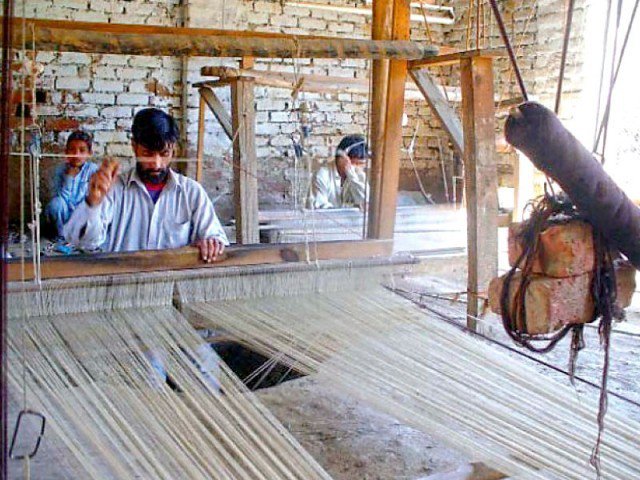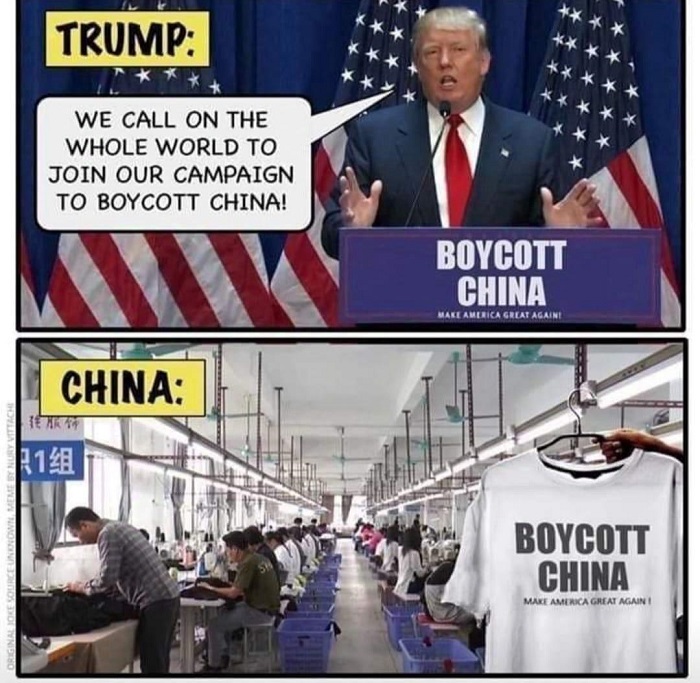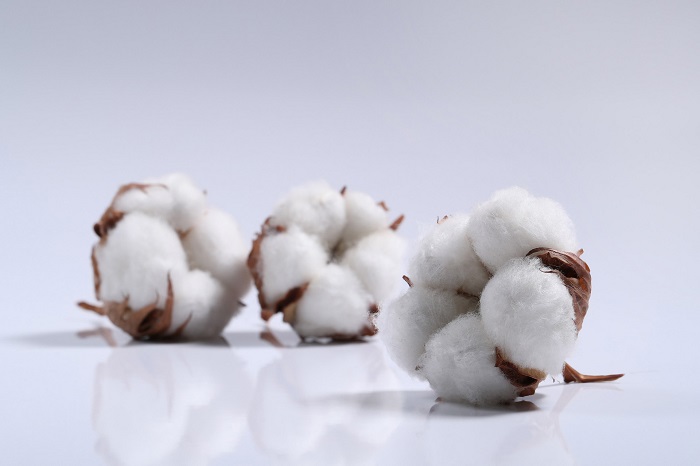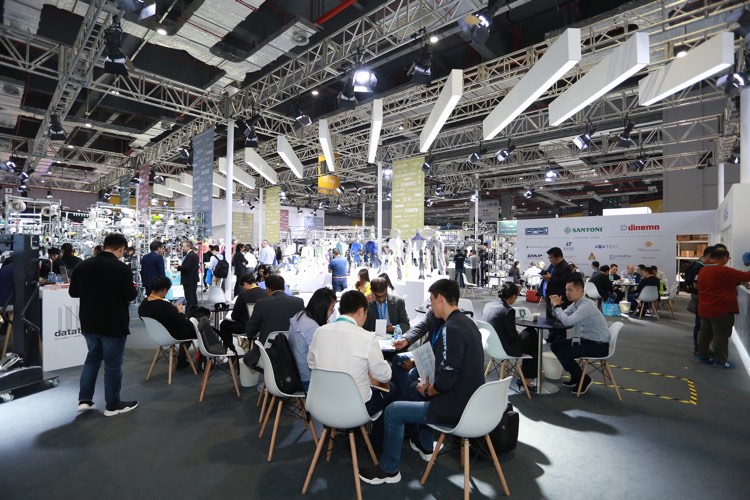FW
For filling gaps in demand and supply Ethiopia has been importing cotton. The new strategy will make recommendations for increased domestic production that will reduce and eliminate reliance on imports. It will set new standards for cotton and is expected to devise a way out to overcome price fluctuation on the global market and its unforeseen impact on Ethiopian cotton growers.
Currently, 136 textile and garment factories, at medium and higher scale, are fully operational. A delay in rainfall has cast doubts on attainment of cotton target for 2015-16. A team will make an assessment in the north and south western parts of Ethiopia, based on which it will re-estimate the expected cotton harvest for 2015-16.
The main problems are: rising demand, complexity of increasing number of textile industries and the supply value chain. Other problems are quality and quantity of cotton inputs as well as gaps in the value chain of input production. The experiences of other African countries with genetically modified cotton will be assessed. The UK is funding a 15-year cotton strategy for Ethiopia with the intent of having a new institutional arrangement for cotton development.
CEMATEX, the European committee of textile machinery manufacturers has shortlisted six finalists from around 30 entries for its first ITMA Sustainable Innovation Award. Three of the finalists are vying for the ITMA Industry Excellence Award while the remaining three are competing for the ITMA Research & Innovation (R&I) Excellence Award.
The award recognises textile and garment manufacturers who have leveraged on technological innovations to advance business sustainability that benefit people, planet and profit. After much deliberation, the judges have picked Berto Industria Tessile SRL (Italy), Gebrüder Otto GmbH & Co. KG (Germany) and Levi Strauss & Co. (USA), who have worked closely with ITMA 2015 exhibitors to introduce innovative solutions to their production process or products.
For R&I Excellence Award – Masters, the three finalists are Jan Vincent Jordan, Institut Für Textiltechnik, RWTH Aachen University for 'Development & Assembly of a Test Bench for the Analysis of Magnetic Weft Insertion', Jenifer Schneidereit, Hochschule Niederrhein for 'Sustainable Water Use in Textile Wet Processing: Development of a List of Improvement Measures for a Self-Assessment Tool for Factories' and Moniruddoza Ashir, Institute of Textile Machinery and High Performance Material Technology, TU Dresden for 'Development of Hybrid Woven Structures for Lightweight Applications'.
The winners of the ITMA Sustainable Innovation Award will be announced at the ITMA 2015 Gala Dinner held at the La Pelota in Milan on November 12. The winner of the Industry Excellence Award will receive a cash prize of €10,000 and a trophy, among other rewards. A cash prize of €4,000 will be given to the winner of the R&I Excellence Award.
www.itma.com
California’s cotton crop, fourth largest in the nation, is expected to witness a decline of 24 per cent this year. California farmers grew cotton on 1.65 million acres in 1979 and 667,000 acres in 2005, but only expect to harvest 160,000 acres this year. It is the lowest acreage farmed for cotton since the economic slowdown. Once booming business is now suffering because of economic upheavals and drought situation.
Farmers grow two kinds of cotton in the area, Upland and Pima. Upland is the common cotton used in a variety of clothing products, while Pima is the fancy, high-priced premium product. California’s crop was almost entirely Upland until it was overtaken by Pima in 2007. However, Pima production has also on the decline since 2011. Pima is expected to be around 75 per cent of this year’s cotton crop.
California grows 90-95 per cent of the country’s Pima cotton, which is convenient, since the state dominates high-end apparel manufacturing. The Los Angeles County Economic Development Corporations says Los Angeles tops nationally in apparel overall and at the second position in textile manufacturing. Southern California produces 75 per cent of the high-end denim worn worldwide.
Overseas textile and apparel importers are re-negotiating their contract terms to get higher realisation from Indian exporters with the rupee’s depreciation. New contract orders are being deferred till Indian currency stabilises. Since China's yuan first depreciated on August 11, the rupee has dipped by over 3.37 per cent to trade at 65.50 against dollar. The Indian currency has depreciated by 5.28 per cent so far this year.
Higher realisation of export driven products from India without raising their prices is the result of a depreciating rupee usually. Therefore, global importers are able to re-negotiate their price of the product for which they had contracted earlier.
Rahul Mehta, President, Clothing Manufacturers Association of India (CMAI) says that this is generally the case and new buyers start re-negotiating contract terms and prices. A new clause is being inducted by overseas buyers normally in the contracts, which keeps re-negotiation of price open. However, he says, old customers have not intervened yet. Mehta added that clients who had negotiated apparel import terms had deferred their orders by two-four weeks, which may even prolong until the rupee stabilises.
Meanwhile, new overseas customers are fixing up apparel price in dollar terms with a condition of the rupee to remain at the current level. Mehta added that if there are sharp currency fluctuations, the price would be re-negotiated. President of Century Textiles and chairman of the Cotton Textiles Export Promotion Council (Texprocil), R K Dalmia, feels that depending upon currency fluctuations in competing country, the Indian textile exporters would benefit accordingly.
Directional looks and new brands that would help men get their fashion right this Spring, were abundant at the recently concluded Las Vegas trade show, held from August 17 to 19, 2015. Major shows and others such as MAGIC Marketplace, Project, Pooltradeshow, Capsule, Agenda and Liberty Fairs had everything, from designer fashion to streetwear and lifestyle looks, and loads of newness.
The trade show giant, renamed several shows including Project Women’s (formerly ENK Vegas) and The Collective (formerly MAGIC Men’s). Upcoming brands showcased on its re-launched innovative Workroom space, while Pooltradeshow returned to the main floor adjacent to Project Women’s and offered buyers easier access to its artistic, emerging collections.
Tommy Fazio, President of UBM/Advanstar, Men’s, said they have accomplished what they set out to do two years ago, which was to create the largest platform of men’s, women’s, designer, contemporary and advanced contemporary, all under one roof and make it a seamless shopping experience. He added that they accomplished it for the first time this year.
For Project, the spotlight was on denim and the show included denim brands such as Hudson Jeans, Diesel and AG Adriano Goldschmied. Also, its inspirational BLUE denim installation created in collaboration with ISKO was a hit. A panel discussion ‘Long Live Denim’ was a part of the show.
Fazio said that the California lifestyle was a big trend and many brands were adding swimwear to their collections. Newness was the key theme at Liberty Fairs, Capsule and Agenda at the Modern Assembly shows.
High power costs is making a negative impact on Raymond's manufacturing unit based at Udwada in Valsad, which is one of the largest worsted suitings plants in India. The company has now said to have approached the Chief Minister of Gujarat Anandiben Patel, requesting the state government to resolve the issue.
The power rate is so high that the company is deliberating over whether to carry out the Rs 300 crores expansion plans, which was planned for its Gujarat unit. The company may now invest in its unit in Maharashtra. The company began facing issues after to source electricity at low rates after the restriction on open access in parts of the state, especially South Gujarat. Open access allowed consumers to procure power from independent power producers using government's transmission lines paying charges towards the same. The Gujarat government last year decided not to allow open access citing high load on transmission lines.
According to Raymond, the power cost increased by 50 per cent since 2006. The per unit cost increased from Rs 5.40 in 2006 to Rs 8.70 now, which also heavily increased the manufacturing cost. The power supplied by Gujarat distribution companies' costs around Rs 8.10 per unit, while the cost of power purchased from open market is around Rs 5 per unit.
www.raymond.in
Hong Kong's future of fashion in the limelight these days and though the city is a commercial hub, so far its efforts to become a creative hub have not yielded much success. Most local designers and companies carve a niche by themselves or are backed by investors. However, initiates, such as ‘The Mills Pitch Day’, funded by the Nan Fung Group hopes to change that. At the inaugural edition of the event, eight entrepreneurs pitched their ideas to impress industry judges and bag a HK$200,000 grand prize. Shai Levy, Founder of Seventy Eight Percent, won the prize which, apart from the cash, included, business development opportunities and a mentorship programme.
Fabio Piras, judge and course director at London's Central Saint Martins college said that Levy was the most convincing of all. He had a business, a real product, was at a stage where he needed a lot of investment, and winning this would allow him to have connections beyond what he can achieve by himself.
The competition, which is part of a larger initiative from the conglomerate to support fashion start-ups in Hong Kong hopes that the city may create an atmosphere of innovation that once existed in Hong Kong during its heydays as a manufacturing hub. Cherry Chan, The Mills Executive Director said that they wished to propel businesses forward in the space of technology and fashion and believed that Hong Kong needed such initiatives.
Work to establish a permanent campus of National Institute of Fashion Technology (NIFT) at Ompora would start soon, announced S K Panda, Union Secretary, Ministry of Textiles. Panda made the announcement during a meeting with Khurshid Ganai, Financial Commissioner Industries and Commerce According to a press handout, Panda along with a team of officers that included Joint Secretary Textiles, Suneena, met Financial Commissioner Industries & Commerce and other officers of the department and held a series of meetings.
Secretary textiles assured that the process for permanent infrastructure for NIFT Srinagar would start soon and even some under graduate courses would be started from the existing campus. It further stated that a cheque of Rs 2.56 crore was presented by the Secretary Textiles to the FC I&C for the development of the urban Haat Jammu and it was also assured that an amount of Rs 2 crore for the upliftment of the Kashmir Haat would be released soon.
At present, NIFT is operating from a temporary unit established at Rangreth Industrial Estate, though land for it was sanctioned a few years ago at Ompora Industrial Estate. Moreover, a Common Facility Centre (CFC) at Kawdara was also commissioned and the CFCs of Jammu Division would also be commissioned.
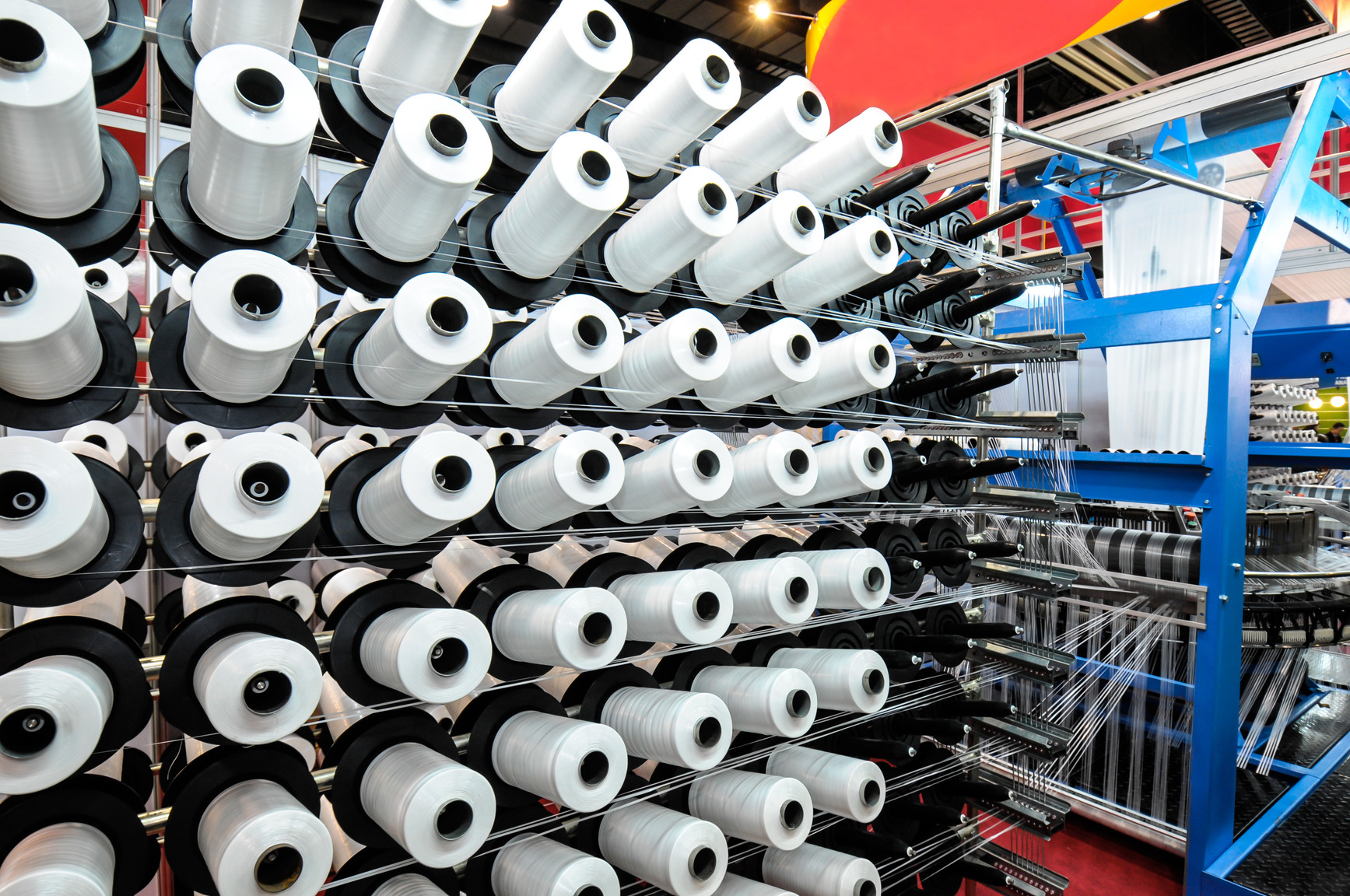
Trend reversal with lesser looms
Demand for textiles is rising globally, creating opportunities for Pakistan’s textile Pakistans weaving sector 2exports. The weaving sector is one of the most important sub-sectors, which further comprises of two kinds of set-ups: the organised and the unorganised. However, Pakistan’s textile industry’s growth shows a reverse trend, especially in the weaving capacity of the mill sector. Installed capacity of looms shrunk from 26,000 in 1978-79 to only 8,000 in 2013-14.
The ‘Power Loom’ sector, in the unorganised sector, has around 300,000 looms and major clusters are in Faisalabad, Gujranwala, Gujarat, Multan, Karachi, Kasur and Jhang. Faisalabad though is the biggest cluster with a substantial number of units that have 50 to 100 looms in a single premise as one unit. The organised sector shifted to cotton spinning, instead of making efforts to develop and modernise the weaving sector. Without modernisation of non-mill weaving, it is not possible to diversify the garments/made-ups sector.
To upgrade product quality, reduce production costs, strengthen competitiveness and stabilize operations, it is necessary to install modern looms. The spinning sector comprises 521 textile units (50 composite units and 471 spinning units) with a capacity of around 11.9 million spindles and 214,000 rotors, as per Textile Commissioner Organisation stats.
Cloth production on the rise
The country’s total production of cloth (mill and non-mill sector) rose from 8,524 billion sq. meters in 2005-06 to 11,850 billion sq. meters in 2013-14. More than 90 per cent of the total fabric production comprises of non-mill loom sector. Therefore, this sector’s weaving capacity continues to enjoy a predominant position. High growth in fabric production is due to the setting up of shuttle-less machines. In Pakistan, shuttle-less weaving is supposedly the largest consumer of cotton yarn, while the non-mill weaving sector contributes to the exports by producing low quality sheeting fabrics. Production of cotton fabrics mill-sector increased from 915 million sq. meters in 2005-06 to 1,036 million sq. meters in 2013-14, thus showing an average increase of 2 per cent per year.
Global demand for clothing and textiles is around $18 trillion worth which would most likely rise by 6.5 per cent per year. Pakistan’s share of world yarn trade is about 30 per cent and cotton fabric is about 8 per cent, making it a major cotton textile products supplier to the global market. Export of cotton fabrics rose from 1.79 billion sq. meters worth $1.80 billion in 2009-10 to 2.35 billion sq. meters worth $2.77 billion in 2013-14. An average increase of 13 per cent per annum in terms of value.
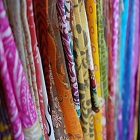
The report of the Working Group constituted by the Planning indian textile export 3Commission on India’s exports during 12th Five Year Plan, envisages exports of textiles and clothing at $64.41 billion by the end of March 2017, which given the current situation and numbers looks unachievable. Considerable decline in textile exports
Exports of fibres decreased over 36 per cent up to February last fiscal, while some other textile items witnessed just a 0.4 per cent rise, primarily due to a slowdown in the Chinese market, which accounts for over 70 per cent of India’s cotton and 40 per cent of yarn supplies. Consequently, exports of raw cotton, including waste, dropped almost 47 per cent during the April-February period from a year before.
Experts believe that with demand from China remaining dull and the government withdrawing some export incentives to the sector, shipment target for the current fiscal would be hard to achieve, especially in view of stiff competition from countries like Vietnam, Bangladesh and Pakistan. Neighbouring countries like Vietnam are showing a positive rise in exports. In 2000, Vietnam had a share of only 0.1 per cent in the US imports, which increased to 8 per cent in 2013, making it the second largest supplier country in the US market after China, according to US Department of Commerce.
Similarly, Bangladesh increased its trade share from 4 per cent in 2000 to 11 per cent in 2013 to EU, making it the third largest supplier country in EU-28 market after China and Turkey. Slowdown in the emerging markets like China, Turkey, Brazil, and Russia and developed countries like the member states of the European Union, Canada and Japan are further impacting export growth of India. Industry unsure of achieving growth target
Though a slowdown in China, political unrest in Bangladesh and labour and other issues in Vietnam gave an opportunity to Indian textile exporters, the segment managed to expand its performance rate by just 8.2 per cent over the last three years. While the average annual growth rate of Chinese textile and clothing exports slowed to 6.1 percent since 2012 from as high as 20.1 per cent in 2011, India’s average expansion rate is just 8.2 percent against 15.8 per cent growth rate reported by Vietnam since 2012. Even Bangladesh, despite all the challenges it has been facing, has managed a growth rate of 7.8 per cent.
Experts blame lack of incentives, excessive emphasis on cotton fibre and handlooms by the government, flip-flop in raw material policy, faulty duty structure in the man-made fibre segment where imports of certain raw materials like PTA are taxed higher than those of finished products and inflexible labour laws as hurdles to the growth of the textile and apparel sector. The withdrawal of certain export incentives in the recently-announced foreign trade policy 2015-20 will further make a negative impact.
India’s overall textile and garment exports grew just 5 percent in the last fiscal. While the Textile Ministry has sought a quick resolution of the India-EU free trade agreement, the ministry has also asked for the continuation of the interest subvention scheme, which was withdrawn from late 2014. Currently domestic textile exporters are given a 2 percent export incentive for outbound shipments only to the US, the EU, Canada and Japan but the industry wants incentives to capture markets in countries such as Bangladesh, Vietnam and Cambodia.
On the positive side, the Dun & Bradstreet Report says, manufacturing infrastructure in the textilesector will benefit from the government’s ‘Make in India’ campaign and domestic demand will improve in the coming quarters as economic growth sentiment improves. Increasing labour cost in China will impact cost competitiveness of Chinese textile mills in export markets, creating an opportunity for Indian mills. Exports to Latin American and Asian countries will increase, offsetting slowdown in the European Union region.
texmin.nic.in

